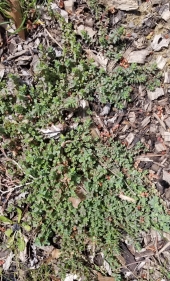
 4
4





 6
6




Mary Sue wrote:Hi friends! I made a St. Johns Wort tincture about 6 weeks ago (soaking the fresh yellow leaves in alcohol). The liquid hasn't turned red (it's orange/yellow). Does anyone know if it would be effective? I wanted to take if for anxiety. I picked the flowers a little late in the season (July), but I picked new blooms and not flowers that were full or fading.
Any help would be greatly appreciated.
- Tim's Homestead Journal - Purchase a copy of Building a Better World in Your Backyard - Purchase 6 Decks of Permaculture Cards -
- Purchase 12x Decks of Permaculture Cards - Purchase a copy of the SKIP Book - Purchase 12x copies of Building a Better World in your Backyard
 1
1




 7
7











 8
8




r ranson wrote:Where I live, we have two varieties of St John's Wort. The tiny delicate flowered version and the massive four-inch wide flowers and big siny leaves. They have the same name, but I understand they are from different families.
I've seen both used for healing tinctures but they produce different coloured results.
Which one did you use?
"The only thing...more expensive than education is ignorance."~Ben Franklin. "We can easily forgive a child who is afraid of the dark; the real tragedy of life is when men are afraid of the light." ~ Plato
 7
7




Trust that if I look like I know what I'm doing, it was luck.
 4
4




Sarah Soleil wrote:I had the same thing happen. I am doing an oil preparation and with just 2 weeks between harvests from the same patch of plants, one batch turned deep red and the next is barely orange tinted.
"The only thing...more expensive than education is ignorance."~Ben Franklin. "We can easily forgive a child who is afraid of the dark; the real tragedy of life is when men are afraid of the light." ~ Plato
 4
4




'What we do now echoes in eternity.' Marcus Aurelius
How Permies Works Dr. Redhawk's Epic Soil Series
 3
3




Joylynn Hardesty wrote:How about tea from the dried herb? Is there any medicine in that?
"The only thing...more expensive than education is ignorance."~Ben Franklin. "We can easily forgive a child who is afraid of the dark; the real tragedy of life is when men are afraid of the light." ~ Plato
 2
2




r ranson wrote:Where I live, we have two varieties of St John's Wort. The tiny delicate flowered version and the massive four-inch wide flowers and big siny leaves. They have the same name, but I understand they are from different families.
I've seen both used for healing tinctures but they produce different coloured results.
Which one did you use?
 6
6




Check out Redhawk's soil series: https://permies.com/wiki/redhawk-soil
 4
4




"Also, just as you want men to do to you, do the same way to them" (Luke 6:31)






 2
2




John Suavecito wrote:I have often read and heard that the fresh flowers of the one that Carla Burke showed are what you make the medicine out of. The other variety of St. John's wort is a landscaping plant without medicinal value.
John S
PDX OR
"Also, just as you want men to do to you, do the same way to them" (Luke 6:31)
 3
3





|
Everybody's invited. Even this tiny ad:
The new gardening playing cards kickstarter is now live!
https://www.kickstarter.com/projects/paulwheaton/garden-cards
|


